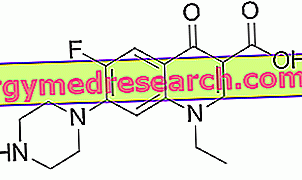Generality
The pavor nocturnus (or night terror ) consists in the partial awakening from deep sleep, prey to a state of intense agitation. This phenomenon is part of the parasomnias (non-pathological disturbances of sleep) and is not connected to traumas or emotional or relational problems.

During an episode of pavor nocturnus, the child:
- You can lift yourself out of bed, crying and screaming excessively;
- His eyes are often wide, but he does not seem to see;
- He responds neither to the call nor to the voice of the parents;
- It is inconsolable.
Often, this phenomenon fades with growth. Meanwhile, it is important to know what not to do during an episode of pavor nocturnus: do not pick up the baby and do not try to wake him; it will be sufficient to check that he does not get hurt moving in his sleep and reassure him, using a calm and calm tone of voice.
What's this
The pavor nocturnus is a parasomnia, that is a non-pathological disturbance of sleep, such as sleepwalking and hypnagogic hallucinations.
The disorder occurs during non-REM deep sleep, during which awareness is lacking (unlike the nightmares that occur instead in the REM phase).
The pavor nocturnus can be very impressive in appearance: the child (non-contactable, because he is not aware: he is sleeping in deep non-REM sleep) seems to be prey to terror and, at the same time, may present symptoms such as excessive sweating, muscle stiffness and tachycardia.
The episode lasts from a few minutes to half an hour; once finished, the child goes back to sleep, as if nothing had happened. In any case, the pavor nocturnus has no underlying pathological cause (neurological, psychological, affective or relational).
Causes
The disorder is quite frequent in children aged 2 to 12 years and tends to disappear on its own during adolescence.
The causes of pavor nocturnus are still unknown, but stress and sleep disturbing conditions, such as:
- Sound or light stimulations during rest;
- Temperature;
- Bladder distention (full bladder);
- Adenoid hypertrophy;
- Night apnea;
- Changes in the hydro-saline balance;
- Medium ear plugs;
- Asthma;
- Gastroesophageal reflux;
- Deprivation of sleep.
In any case, the pavor nocturnus is not an expression of neurological, affective or relational disorders and is not a panic attack. This manifestation is the result of an activation of the limbic system (which, among other things, manages emotions) and is not realized as a result of lived experiences.
Symptoms and complications
The pavor nocturnus manifests itself intermittently and for short periods, therefore it shows a gradual and spontaneous remission over time.
The episodes of pavor nocturnus can be impressive: the child cries, cries, looks scared, has his eyes wide open or clenched, he can wriggle in broken movements and does not respond to attempts at comfort.
Furthermore, the pavor nocturnus is typically accompanied by:
- Increased heart rate (tachycardia);
- Muscle stiffness;
- Tachypnea (accelerated breathing);
- Pallor or, on the contrary, redness of the face;
- Excessive sweating;
These manifestations depend on a strong activation of the autonomic nervous system (not caused by emotional experiences). In general, the child goes back to sleep after a few minutes, as if nothing had happened; unlike nightmares, those who experience pavor nocturnus in the morning do not remember these episodes, leaving partial or total amnesia.
Diagnosis
In most cases, the diagnosis of pavor nocturnus is purely clinical : referring the symptoms to the family doctor or pediatrician, he quickly identifies the disorder.
The pavor nocturnus is part of the parasomnias group, ie non-pathological disturbances of sleep, such as sleepwalking and hypnagogic hallucinations. We reiterate that this manifestation has no pathological significance (it is not associated with any kind of physical or mental illness).
The instrumental examination ( polysomnography ) is indicated if a differential diagnosis is required with respect to epileptic episodes during sleep, or when the simultaneous presence of respiratory pathologies is suspected.
Therapy
In general, the pavor nocturnus tends to be self-limited and does not require any kind of medical intervention, although it may continue for years. If the disorder persists during adolescence or adulthood, when strictly necessary, it is possible to resort to an anxiolytic or antidepressant drug therapy, to reduce the incidence of attacks and stabilize sleep.
What to do
However instinctive, trying to wake someone, adult or child, during an episode of pavor nocturnus is very difficult, inappropriate and, often, useless.
During an episode of pavor nocturnus:
- Do not touch the child, but prevent unconscious gestures that could hurt you;
- Avoid sudden movements to reduce the duration of the attack and avoid aggressive reactions;
- Do not try to wake up the child by force: this behavior could increase agitation and prolong the event; instead, it is useful to try to talk to him in a quiet voice and low tones;
- Encouraging the return to bed is very important to limit the duration of the episode.
In general, however, it is possible:
- Adopt home security measures: eg block doors and / or stairs, remove objects that may be harmful or constitute a hindrance if the child stands up;
- Treating sleep hygiene: maintaining a regular sleep-wake rhythm, avoiding caffeinated soft drinks in the evening, etc .;
- Avoid reporting to the child what happened during the night: this could predispose to anxiety disorders.



